The history of the moccasin
- FROM THE ORIGINS OF HUMANITY -
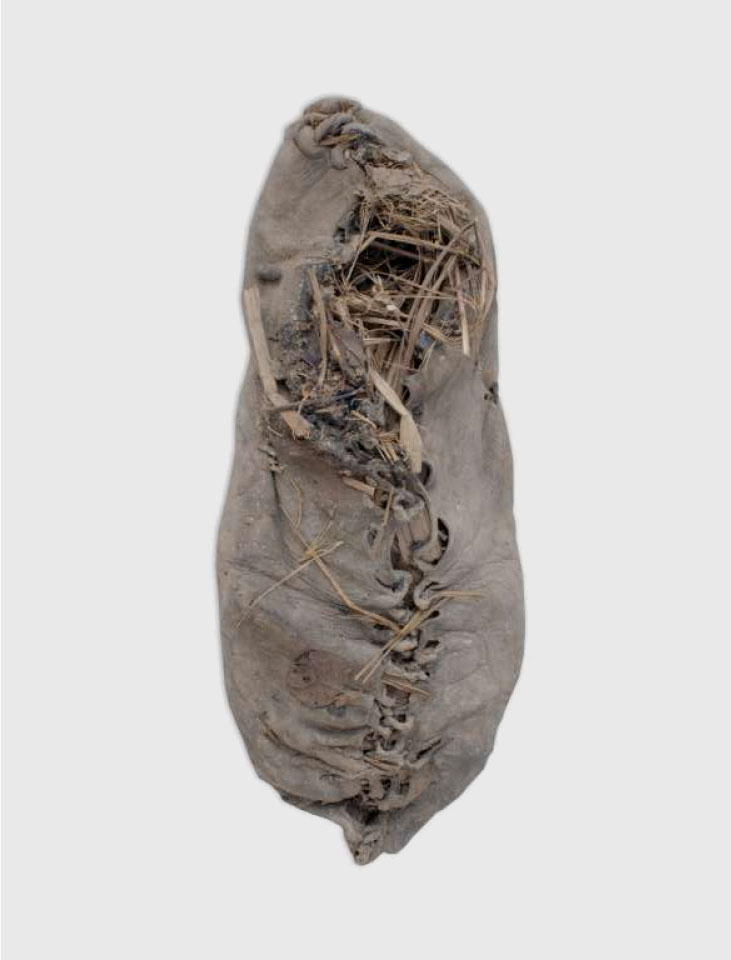
Leather slippers, soles made of rope, braided sandals: the ancients took care of their feet. The oldest shoe ever discovered to date is a leather moccasin dating back 5,500 years, found in Armenia, on the border of present-day Turkey and Syria. Made of a single piece of soft leather and tied with a lace inserted into about twenty eyelets, it bears witness to an inventive skill that was widespread in Europe during prehistoric times and suggests that this type of shoe may have been worn for a long time in regions far removed from each other1. Its manufacture presents an amazing resemblance to the moccasins worn by the Indigenous peoples of North America when they met the first European explorers six millennia later.
From the indigenous slipper to the cow-hide shoe
A moccasin is a flexible shoe made from one to three pieces of leather: the upper envelops the foot, the apron covers the top of the foot and the collar encloses the assembly2. The origin of the word is known to us thanks to the French author and traveller Marc Lescarbot, who sojourned in Acadia in 1606-1607, and said about the Algonquins: “…ours wear shoes, which they call Mekezin, which they make very ingeniously, but cannot last long, especially when worn in damp places since the leather is not dressed, nor hardened, elk leather worked as would be a buffalo hide.” [TRAD]3.
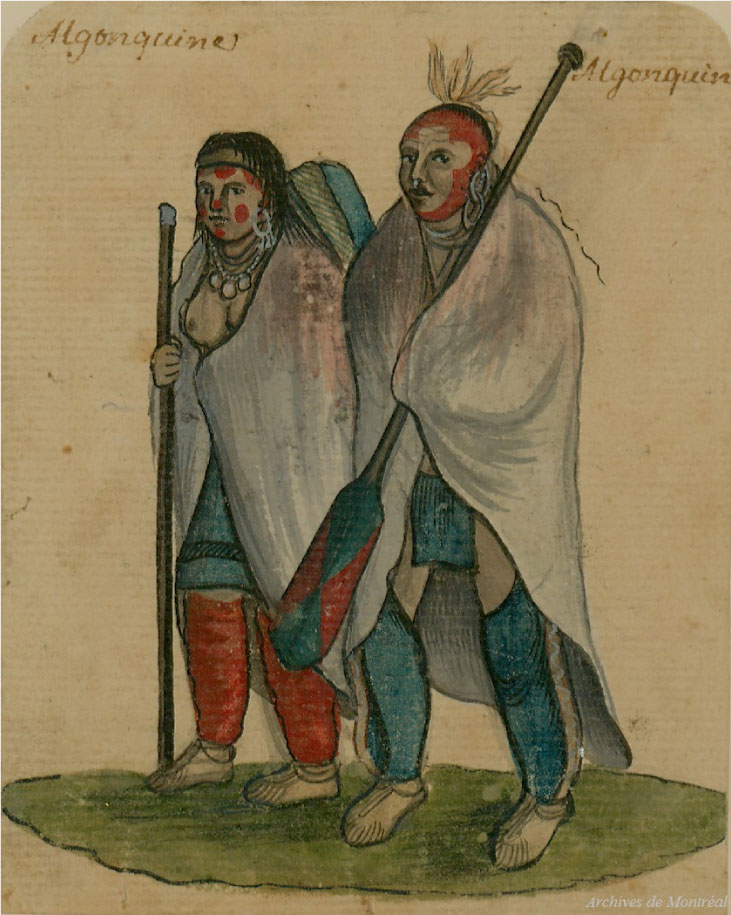
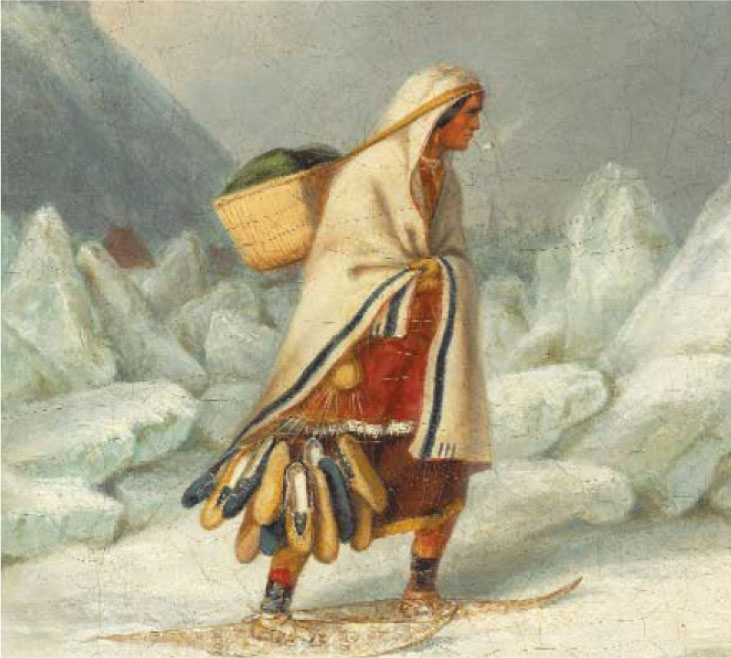
At the dawn of the colonization of the St. Lawrence Valley, the skill for making the European moccasin had been lost to a more modern fashion. However, French leather shoes fitted on wooden heels were poorly adapted to the North American winter, and the first Europeans did not hesitate to buy “Indian shoes” from the Indigenous people, whose deer or stag leather retained its suppleness even at extreme temperatures. This suppleness made it possible, among other things, to put on snowshoes or to travel in a bark canoe without damaging it, qualities appreciated by the coureurs des bois who, faced with the rigours of the climate, began to dress quite naturally, “in the style of the Natives.”4
Their shoes are made of deer, bear and beaver hides of which they use many.
.” - Samuel de Champlain5
A cottage industry in evolution
The establishment of the Huron-Wendat community at Jeune-Lorette, near Québec City, around 1697 greatly facilitated this trade, with Indigenous peoples engaging in leather work in addition to their hunting and fishing activities. Through contact with Indigenous culture and exchanges with them, Canadians quickly learned the techniques for making moccasins and, from then on, used almost no other types of footwear6. Renamed soulier du pays (country shoe), pichou, soulier ou botte du pays (country shoe or boot) or simply chaussure de bœuf (cowhide shoe), the French adapted them to their everyday life by replacing moose, caribou, deer or seal leather with the leather of cow, sheep or calf7.
Industrialization and massive immigration in the 19th century created a surge in demand for Indigenous-made products in Canada, so that Huron entrepreneurs chose to hire an ever-increasing number of non-Indigenous people and train them in leather work. Many of these non-Indigenous people would later open their own factories8.
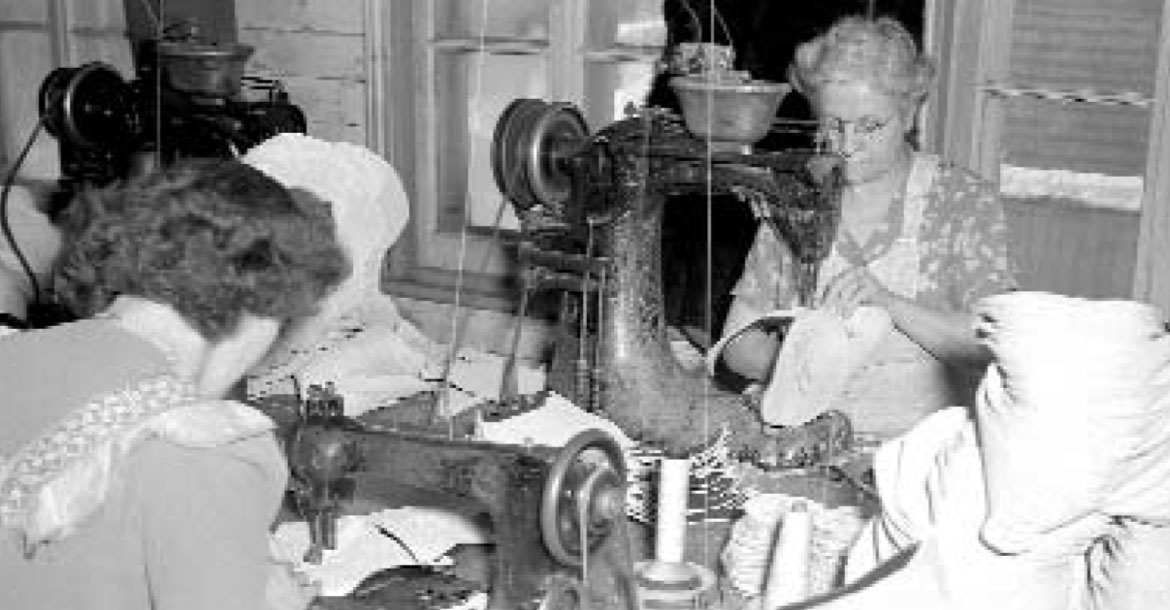
Know-how handed down from generation to generation
At the turn of the 20th century, production peaked: more than 7,000 pairs of snowshoes and 140,000 pairs of moccasins were produced annually by a population of no more than 400 souls. The Industrial Revolution transformed manufacturing methods, introducing so-called “piecework”: starting in 1960, the pieces of leather that used to be cut with a knife were now cut in the factory by experienced cutters and then distributed to craftsmen for assemble, beading and lacing operations remunerated with a fixed fee for each dozen moccasins.
Beading consists of decorating the moccasin with numerous small beads of various colours. The more complex the pattern, the longer it takes to complete. Since this work is done at home in the communities of Loretteville, Saint-Émile and Lac-Saint-Charles, it is not uncommon to see all the members of a family participate from a very young age, in order to increase the family income9. As they are learning, the children are given more demanding tasks, so that sometimes several generations of beading artists are found within a same family.
Now in fierce competition with imported products, Québec moccasin production continues to rely on the expertise of a local workforce that continues to preserve a typically Canadian tradition and a know-how that dates back to the origins of mankind.
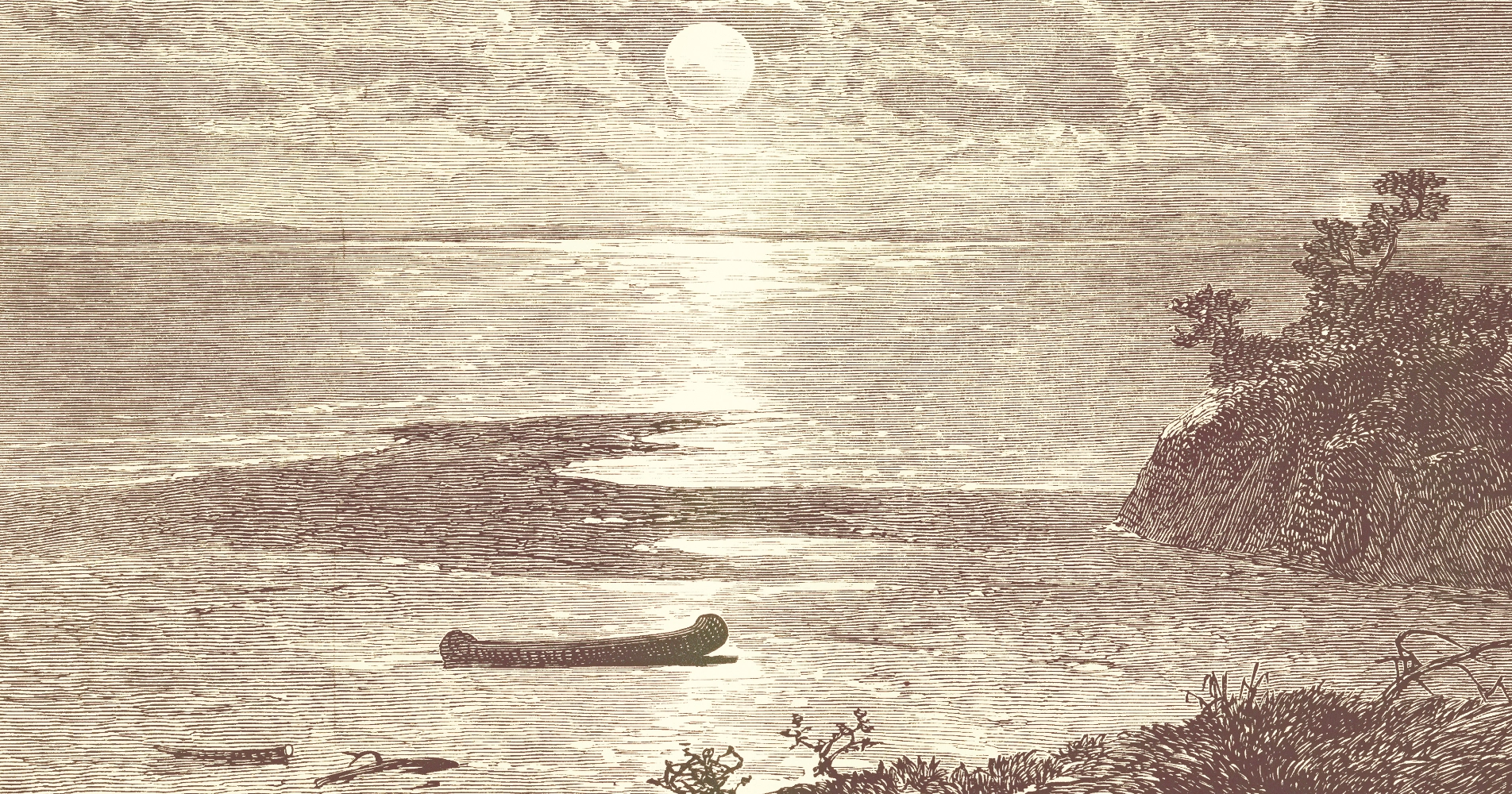
Ls grande tabagie: The firts French-Amerindian alliance
Samuel de Champlain recounts in his travelogues that on May 27, 1603, a coalition of about 1,000 Innu, Algonquins and Etchemins celebrated their victory over the Iroquois at the mouth of the Saguenay River. Upon the arrival of the French, the host of the event, the Innu chief Anadabijou (“grand sagamo”), received them according to the custom of the country. At the end of the meeting, he declared that they are welcome and that they will be able to populate these lands on the condition that they help them fight their enemies10, a promise that Champlain honoured six years later at the lake that now bears his name.
"This first Franco-Aboriginal alliance not only paved the way for the French colonization of the continent, but also for the blending of the cultures and knowledge of two worlds no longer separated by an ocean."
Samuel Venière
Consulting Historian
1 La plus vieille chaussure du monde, Le Monde.fr
2 Histoire de raconter : le travail du cuir à domicile, Ville de Québec - Patrimoine
3 Marc Lescarbot, Histoire de la Nouvelle-France Contenant les navigations, découvertes, & habitations faites par les François en Indes Occidentales & Nouvelle-France, Chapitre VIII, Paris, 1617.
4 Pehr Kalm, Voyage de Pehr Kalm au Canada en 1749, traduit et annoté par Jacques Rousseau, Guy Béthune et Pierre Moresset, Montréal, Pierre Tisseyre, 1977, folio 929.
5 Œuvres de Champlain, Publié par l'Université Laval en 1870, seconde édition, Tome 1
6 Rapport de l'archiviste de la Province de Québec (R.A.P.Q.) 1923-1924, Québec, Imprimeur du Roi, p. 57 : Mémoire Bougainville.
7 M.-A. Bluteau, J.-P, Charland et M. Thivierge, Les cordonniers artisans du cuir, Montréal, Boréal Express, 1980, p. 38-39 ; Bernard Audet, Op. cit., p. 56
8 Histoire de raconter : le travail du cuir à domicile
9 Op. Cit. Histoire de raconter : le travail du cuir à domicile.
10 La Grande tabagie de 1603, Entrevue avec Éric Bédard historien, à Radio-Canada

